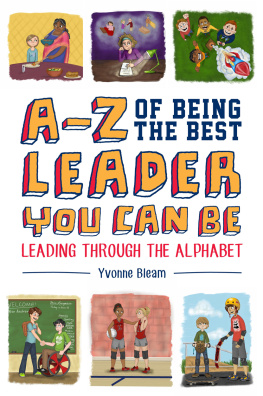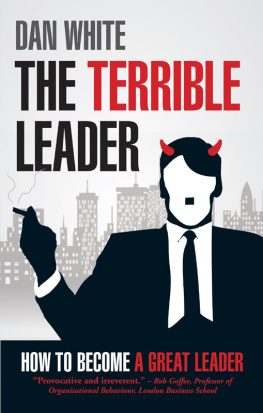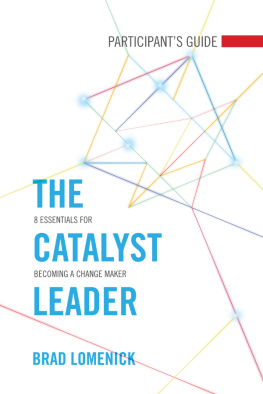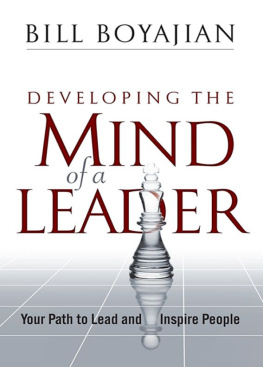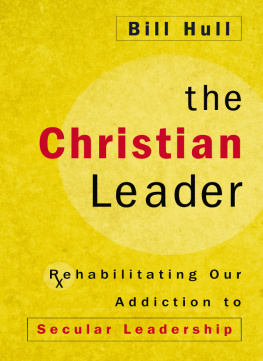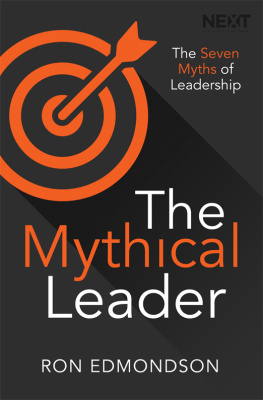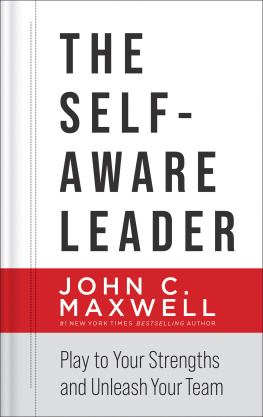How to Be
a Leader
Martin Bjergegaard
and Cosmina Popa
MACMILLAN
Introduction
1. Bystanders vs leaders
The murder of Kitty Genovese on 13 March 1964 has influenced Western psychology, culture and consciousness more than anyone thought possible. Besides making nationwide headlines at the time, it sparked a whole new field of scientific research for decades to follow, it has been studied in several bestselling books (including two from 2014), and it has served as inspiration for numerous songs, movies and theatre plays. The misdeed also accelerated the implementation of the 911 emergency system, which became a reality across the United States in 1968.
What was so special about this crime? With 636 murders in New York City during the year of 1964, another spilled life was sad, but hardly much of a public affair. Yes, the murder was brutal, and the victim was a pretty young woman, but that alone was far from outstanding. Kitty wasnt famous and she didnt have friends in high places. So it was no surprise that for the first ten days the incident didnt get much attention at all. But then something happened.
A. M. Rosenthal was relatively new on the job as the metropolitan editor of the New York Times. He was very ambitious, and he often had lunch meetings with New York Citys police commissioner, Michael Murphy, to scout for particularly juicy crimes to report on. During one of their lunch meetings Murphy shared how it surprised him that this twenty-eight-year-old bar manager, Kitty Genovese, had been chased, stabbed, sexually assaulted, and eventually killed, in the middle of the street, and yet no one had even bothered to call the police.
It wasnt that Kitty didnt scream. She did. A lot. During the investigation the police had to interview thirty-eight eyewitnesses, all of whom had either seen or heard Kitty sometime during the almost thirty minutes it took the twenty-nine-year-old Winston Moseley to commit his random act of cruelty. Moseley was on his own, unknown in the neighbourhood, and the only weapon he brought on the day was a hunting knife. So why did no one come to Kittys rescue, or at least make an effort to alert the police?
Rosenthal went away from that lunch feeling that he was on to something big. Three days later the New York Times ran a front-page story with a four-column headline:
37 WHO SAW MURDER DIDNT CALL THE POLICE
Apathy at Stabbing of Queens Woman Shocks Inspector
The article opened with:
For more than half an hour 38 respectable, law-abiding citizens in Queens watched a killer stalk and stab a woman in three separate attacks in Kew Gardens.
Readers were seemingly forgiving of the minor inconsistency on the number of witnesses, and soon the story was on everyones lips. As the police report came out, two quotes from the passive bystanders won particular fame. A neighbour and friend of Kittys had opened his front door, been face to face with the killer for a moment, only to quickly close the door again. To the police he explained, I didnt want to get involved. In another apartment a woman had said to her husband, Thirty people must have called the police by now.
Millions of Americans were outraged, as well as moved to tears, and it was widely debated how something like this could have happened. Possible explanations ranged from numbness caused by growing television consumption to the cynicism appearing in big cities, with some simply dismissing the human race as selfish, fearful and lacking any real sense of empathy.
Modern-day reviews of the case have shown that Rosenthal had got a bit carried away and exaggerated some of the facts he learnt during these three days in 1964, reading police reports, studying witness statements and talking to neighbours. There was actually one person who shouted out the window Leave that girl alone, which prompted Moseley to stop his attack and return to his car. But only to come back. There was also an old woman who came out after the murderer had left, and she was holding the dying Kitty Genovese in her arms when the police finally arrived. One person claims that he did call the police, but was ignored. And the scared neighbour who had slammed the door because he didnt want to get involved, in his panic took the back door to a friend in the same building. After long discussions (and when it was too late to save Kitty) he did in fact muster up the courage to give the police a ring. Finally, there had been two attacks on Genovese, not three, and the latter of them had taken place out of sight of the eyewitnesses.
Despite these exaggerations, the murder of Kitty Genovese gave food for thought. It touched on a deep and primal fear: If my life should be in danger, would anyone come to help me? Moseley quickly went behind bars (where he still is), but this kind of fear has more to do with our human nature than with any one psychopath. The incident made us question ourselves. Answers were needed.
Social psychologists Bibb Latan, John Darley and Judith Rodin were the first to provide the public with a scientifically solid explanation. Following the 1964 ordeal they promptly went on to conduct a series of experiments. One of their studies, published in 1969, revealed that whilst 70 per cent would help a woman in distress when they were the only witness, only about 40 per cent took action when other people were also present.
In another experiment, participants were brought in supposedly to fill out questionnaires. Some were placed in a room alone, whilst others were seated together with two other people, either fellow participants or researchers posing as participants. As they sat filling out questionnaires, smoke began to fill the room. When participants were alone, 75 per cent reported the smoke to the experimenters. By contrast, just 38 per cent of participants in a room with two other participants reported the smoke. In the final group, when the participants were paired with two researchers in disguise, who noted but ignored the smoke, only 10 per cent of the participants reported it.
This phenomenon became known as bystander apathy or the bystander effect, and it went a long way to explaining why there had been no help for Kitty Genovese that night in Kew Gardens. Simply put, the more people who can help, the fewer actually will help. This is attributed to two psychological principles. The first is diffusion of responsibility: With this many people around, why should I help? Action or inaction becomes a shared responsibility. The group makes a decision, not the individual. Unfortunately, group decision-making is a dreadful mechanism in emergency situations.
The second principle is that of social influence, which means that, when something unexpected happens, bystanders will monitor the reactions of other people as their main input as to whether action is necessary. A bunch of passive bystanders provide social proof to each other that its okay not to step up and help.
Now that weve seen an example of bystander apathy, lets look at a case which tells a different story. A story of one leader emerging from the crowd of bystanders.
Due to a fatal combination of a heavy snowstorm and a range of serious pilot errors, Air Florida Flight 90 only managed to climb 107 metres before starting to decline on 13 January 1982. Within thirty seconds of take-off, and just two miles from the White House, the plane struck the 14th Street Bridge, plunged through the ice and sank immediately in the Potomac River. On board were seventy-four terrified passengers and five crew members.
Only six people made it out of the plane wreckage, and surfaced amidst twisted metal and broken ice. Injured, shocked and trapped in below-zero-degree water, the survivors needed help to come ashore. Unfortunately, the bad weather had caused traffic jams all over the city, and the emergency vehicles struggled to get to the site. However, the lines of cars stuck in traffic meant that plenty of people had seen the startling accident, and after a few minutes close to a hundred people had arrived, including emergency personnel. But no one had any ideas as to how to get to the survivors, and the situation was becoming desperate. The crowd watched as the six survivors kept fighting for their lives, holding on to floating metal parts and ice flakes, screaming and begging for help.


